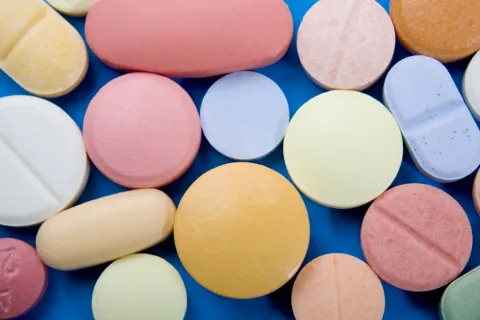WHO Essential Medicines List
For an update (2019) see https://www.uicc.org/news/12-new-cancer-medicines-added-who-essential-medicines-list

New decisions on palliative and oncology medicines
The WHO Model List Essential Medicines is composed of a set of medicines that “satisfy the priority healthcare needs of the population; they should therefore be available at all times in adequate amounts and in appropriate dosage forms, at a price the community can afford." Updated every two years by a dedicated Expert Committee, the WHO Model List of essential Medicines provides an internationally recognizable set of selected medicines to help countries choose how to treat their priority health needs.
On July 8, the Expert Committee on the Selection and Use of Essential Medicines released a summary of its decisions taken during its meeting in April 2013, and a new edition of the WHO Model Lists of essential medicines for adults (EML) and Children (EMLc) – both of which are very positive for the cancer community. The decisions include:
- A new separate section “Medicines for Care and Palliative care” has been created in the new edition of the EML to include all medicines related to pain relief & palliative care. As such, these medicines have been removed from the section on cancer drugs. The new section includes a list of medications proposed by the International Association for Hospice and Palliative Care (IAHPC) to be used in palliative care to treat the most common symptoms.
UICC congratulates the IAHPC for its efforts and commitment to improve the the representation of palliative care on the EML and EMLc and WHO for this recognition of the high importance of palliative care medicines for all patients, beyond the oncology use.
IAHPC Press Release dated 10th July 2013 The World Health Organization publishes a Model List of Essential Medicines for Palliative Care -
As suggested by UICC in its proposal to the Committee (see the Cover letter and presentation during the open session), the Expert committee decided that a review of section 8.2 on cytotoxics and adjuvant medicines was urgently needed.
A new structure of the section, applying a tiered-approach, is recommended. The summary indicates that this section review would “require the identification of the treatable, public health relevant tumors in adults, and the identification of the medicines required to treat those tumors, considering a stepwise development of cancer care systems in the overall context of health system development”.
UICC is very pleased by the recognition of the importance of a specific representation of essential cancer medicines in the WHO EML and the crucial step taken by the Expert Committee to ensure that the WHO EML reflects the cancer medicines that are most essential for patients worldwide.
This decision is in keeping with the progress achieved with the adoption of the target and indicator in the NCD Global Monitoring framework for a 80% availability of essential medicines and the commitments on treatment access in the NCD Global Action Plan during the WHA in May.
We will be following up on what UICC can propose for this major undertaking and how to engage our membership and the whole cancer community with a view to improving access to essential cancer medicines worldwide.
The final report of the Expert Committee will be published in the 3rd quarter of 2013. In the meantime, the following documents are available:
WHO Model List of Essential Medicines for adults 18th edition (April 2013)
WHO Model List of Essential Medicines for Children 4th edition (April 2013)
Please visit our dedicated page on access to essential medicines
Last update
Thursday 08 August 2019
